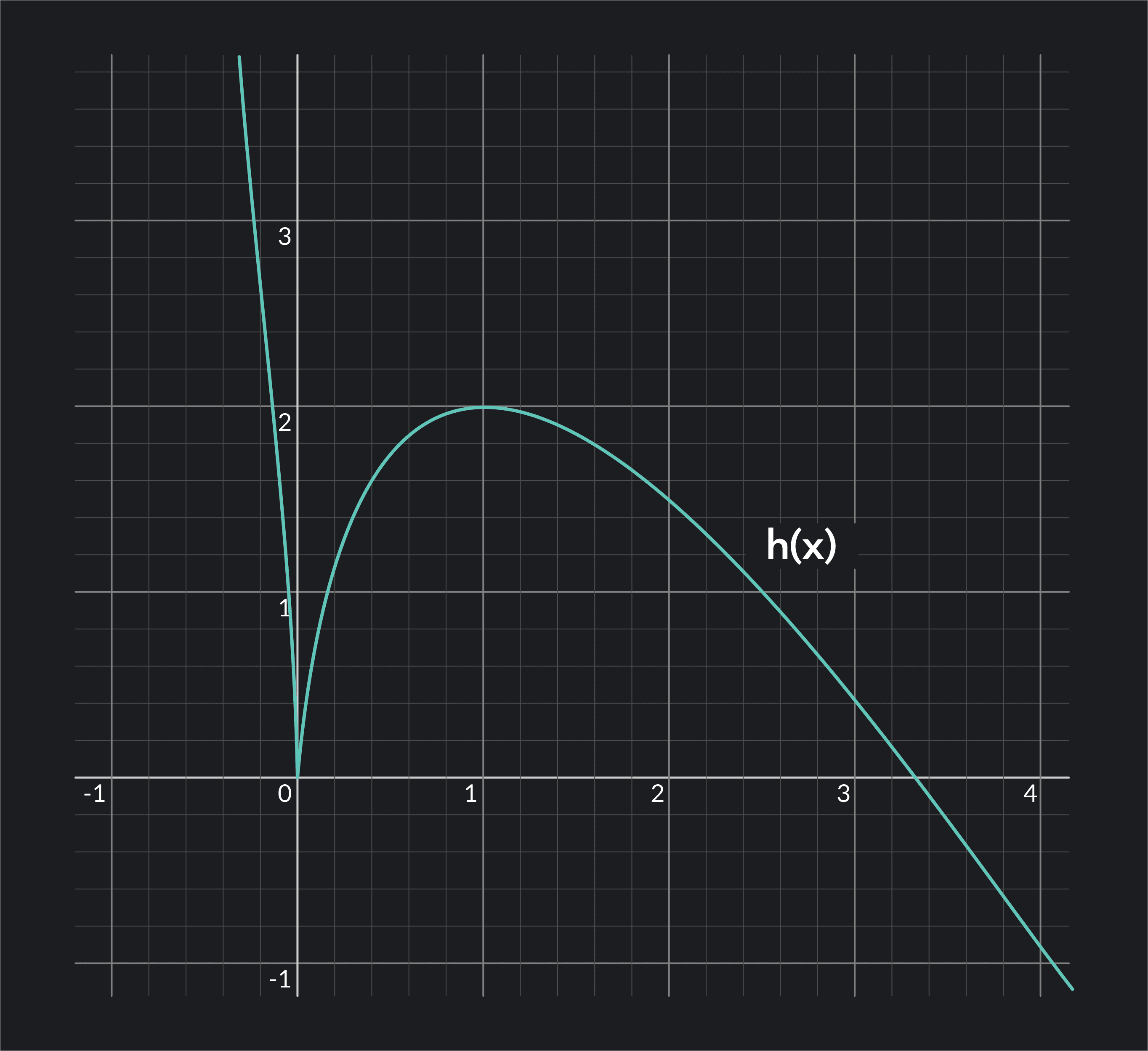
Calculus
Understanding the Squeeze Theorem
Learn what the squeeze theorem is, how to prove it, and practice with some examples and tips.
Rachel McLean
Subject Matter Expert

Calculus
06.15.2023 • 5 min read
Subject Matter Expert
Learn the definition of relative extrema, how to identify points of relative minima and maxima, and practice your knowledge with worked examples.
In This Article
Relative extrema are the points on a function where the curve changes direction from increasing to decreasing, or from decreasing to increasing. On a graph, these points look like peaks and valleys. These are the points on a function where the derivative changes from positive to negative, or from negative to positive.

For instance, let’s say has a relative maximum at . Then for all x-values of the function close to , is less than or equal to .
On the other hand, let’s say has a relative minimum at . Then for all x-values of the function close to , is greater than or equal to .
Relative maxima and relative minima are types of local extrema. An absolute maximum and absolute minimum, by contrast, are the very highest and lowest points on the curve over the entire domain of the function.
Note that relative maxima and minima are y-values; this means that the maximum values and minimum values are equal to the height of the curve at some point .
Here are the definitions of relative maxima and minima:
At a relative minimum, the slope of the function is zero or undefined, and the function changes from decreasing to increasing.
At a relative maximum, the slope of the function is zero or undefined, and the function changes from increasing to decreasing.
You can use several effective methods to find the relative extrema of a function. These include the Second Derivative Test, the First Derivative Test, and examining the graph of the function. Derivative tests explain how a function’s derivative changes its shape. Here’s an in-depth explanation: The Second Derivative Test is often the fastest of the three methods.
Here are the steps to using the Second Derivative Test to find relative extrema:
Take the first derivative of the function.
Find the critical points of the function where the first derivative is zero. The critical points where are also called stationary points. To find the stationary points, set the first derivative equal to zero and solve for .
Take the second derivative of the function. To do this, take the derivative of the first derivative.
For each stationary point , plug into the second derivative function, and interpret the results.
If is positive, then the function has a relative minimum at .
If is negative, then the function has a relative maximum at .
If is zero or non-existent at , then the test is inconclusive.
When the Second Derivative Test fails, other methods must be used to determine if local extrema is at the critical point, such as the First Derivative Test.
In calculus, a critical point is a point on a function where the derivative of the function is either zero or undefined. All local extrema occur at critical points, but not all critical points are local extrema.

The First Derivative Test is one method for determining whether a critical point corresponds to a local maximum, local minimum, or neither. The test involves analyzing the sign of the first derivative of the function on either side of the critical point.
If the function changes direction (from increasing to decreasing or decreasing to increasing) at the critical point, then that point is a relative minimum or relative maximum.
Here are the steps to using the first derivative test:
Take the first derivative of the function.
Find the critical numbers of the function by setting the first derivative equal to zero. Also identify the points where the function is undefined.
Determine whether the critical value corresponds to a relative maximum, relative minimum, or neither by analyzing the sign of the first derivative on either side of the critical point. We can do this by using test points.
If the function is increasing on the left and decreasing on the right of the critical point, then the critical point is a relative maximum.
If the function is decreasing on the left and increasing on the right of the critical point, then the critical point is a relative minimum.
When thinking about relative extrema, it's important to understand the concept of increasing and decreasing intervals. Relative extrema occur at the points where a curve changes from increasing to decreasing, and vice versa.
Suppose a function is differentiable on the interval . Then:
If for each on , then is increasing on .
If
If for each on , then is constant on .
Relative extrema play a crucial role in many applications of calculus, including optimization problems in economics, physics, and engineering. Let’s practice with some relative extrema calculus problems.
We’ll use the Second Derivative Test, the First Derivative Test, and practice finding relative extrema on a graph.
Consider the function . Find its relative extrema.
We can find the critical points by setting the first derivative equal to zero:
Setting , we get . We can use the Second Derivative Test to determine the nature of this critical point. Taking the second derivative, we have:
Evaluating at , we get . Since is positive, the function has a relative minimum at of .
Consider the function . Find its relative extrema.
We can find the critical points by setting the first derivative equal to zero:
Setting , we get . Solving for , we get and . These are our two critical points. We can use the First Derivative Test to determine the nature of these critical points:
By plugging test points to the left of into the first derivative, we find that the derivative is negative. Therefore, the function is decreasing to the left of . By plugging test points to the right of into the first derivative, we find that the derivative is positive. Therefore, the function is increasing to the right of . Thus, a relative minimum is at of .
By plugging test points to the left of into the first derivative, we find the derivative is positive. Therefore, the function is increasing to the left of . By plugging test points to the right of into the first derivative, we find the derivative is negative. Therefore, the function is decreasing on the right of . Therefore, a relative maximum is at of .
Consider the function .
We will find the relative extrema by analyzing the graph of the function:

From the graph of , we can see the function has a relative minimum of 0 at , and a relative maximum of 2 at . At , the direction of the function changes from decreasing to increasing, and at , the direction of the function changes from increasing to decreasing.
Outlier (from the co-founder of MasterClass) has brought together some of the world's best instructors, game designers, and filmmakers to create the future of online college.
Check out these related courses:

Calculus
Learn what the squeeze theorem is, how to prove it, and practice with some examples and tips.
Subject Matter Expert

Calculus
Learn how to integrate a fraction using partial fractions, trigonometric identities, and substitution. There’s also solved examples and FAQs.
Subject Matter Expert

Calculus
Learn the similarities and differences between calculus and algebra. Explore their key ideas, applications, and history.
Subject Matter Expert